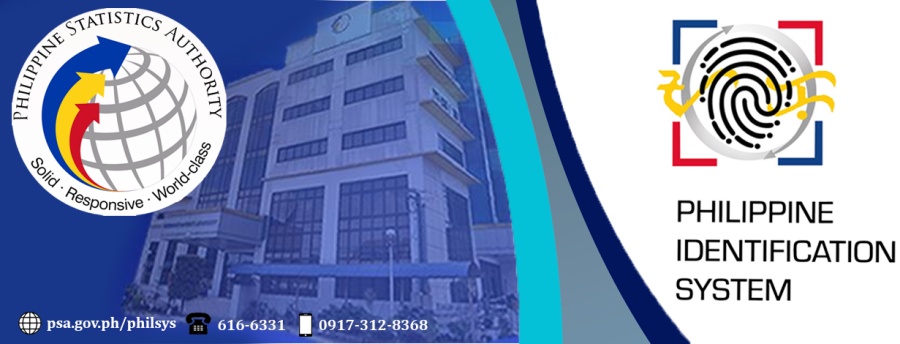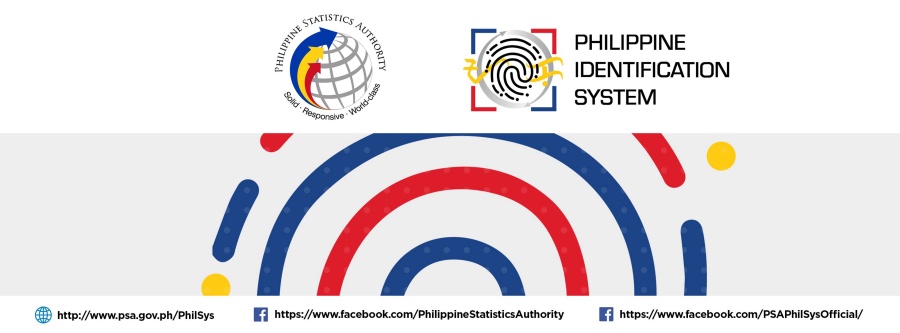Many Filipinos have multiple IDs — company ID, driver’s license, passport, Unified Multipurpose ID (UMID), and so on. In contrast, there are many other Filipinos, especially in the informal sector, who do not have any IDs at all. This makes it hard for them to access basic services, such as banking and healthcare. Fortunately, every Filipino will eventually have a PhilSys ID.
The Philippine Identification System ID, better known as PhilSys ID, is the official national identity card for Filipino citizens globally and foreign permanent residents in the Philippines. It is part of a national identification system being implemented by the Philippine government. Keep on reading to learn more about the PhilSys ID, its uses, and how to apply or register for it.

What is PhilSys?
First of all, let’s get to know more about the Philippine Identification System (PhilSys), the main identification system for all Filipino citizens and foreign permanent residents in the Philippines.
The basis for PhilSys is Republic Act No. 11055, which is also known as the Philippine Identification System Act. It was signed into law by President Rodrigo Duterte on August 6, 2018.
The main agency that is carrying out the provisions of R.A. 11055 is the Philippine Statistics Authority (PSA). Specifically, the PhilSys Registry Office (PSO), operating under the Office of the National Statistician, was created to oversee the planning, management, and administration of the system. It was also tasked to issue rules on registration, authentication, data governance, and other matters concerning PhilSys.
What are PhilSys’ Goals?
The main goal of PhilSys is to establish a single national identification system for all Filipino citizens globally, as well as for foreign permanent residents in the Philippines. Specifically, the system aims to:
- Provide a valid proof of identity for Filipino citizens worldwide and foreign permanent residents in the Philippines;
- Promote effective and efficient transactions with the public and private sectors;
- Serve as the link in promoting and delivering social services, while strengthening financial inclusion;
- Contribute towards the enhancement of administrative government;
- Help reduce corruption; and
- Promote ease in conducting business.
What is a PhilSys ID?
Upon successful registration in the national identification system, a person will be given a PhilSys ID. This non-transferable card will serve as his/her valid proof of identity when transacting with the public and private sectors.
For Filipino citizens, the PhilSys ID has no expiration date. Meanwhile, for foreign permanent residents, the ID will be valid for one (1) year only.
Notably, the PhilSys ID is free of charge. Fees will only apply for replacing the ID, in case of loss or damage. However, those who hold a Certificate of Indigency are exempted from this fee, provided that they show their certificate.
What is the Use of a PhilSys ID?
Aside from being a valid proof of identity, the PhilSys ID, as part of a new system, will play a role in streamlining the delivery of services. This way, it will be easier for Filipino citizens and foreign permanent residents to access the government’s programs, services, and benefits.
Moreover, the PhilSys ID will not replace existing IDs that are designed for specific purposes (e.g. Philippine passport for travelers, driving license for drivers, etc.).
How Can I Apply for a PhilSys ID?
For the general public, registration for the PhilSys ID is set to begin this year, 2021. The PSA, in coordination with Local Government Units (LGUs), government agencies, and the private sector, will establish fixed as well as mobile registration centres in strategic locations nationwide.
Generally, the registration will be done in three (3) main steps:
Step 1. Collection of demographic data and appointment setting for Step 2. Demographic data includes the person’s name, gender, birthdate, birthplace, blood type, and address. Optional information such as marital status, mobile number, and email address may also be given.
Step 2. Validation of supporting documents and capture of biometrics (e.g. photograph, fingerprints, iris scan).
Step 3. Issuance of the PhilSys Number (PSN) and the PhilSys ID.
During registration, the public is assured that the PSA will adhere to health and safety measures, such as: mandatory wearing of face masks and face shields, temperature checks upon entry to the registration centre, physical distancing, regular sanitation of hands with alcohol, and sanitation of registration kits after every use.

What are the Requirements to Apply?
Upon registration, applicants will be advised to present an original copy of at least one (1) of the following documents:
Primary Documents
- Birth Certificate issued by PSA and one (1) government-issued identification document bearing the applicant’s full name, front-facing photograph, and signature/thumb mark
- Philippine Passport or e-Passport issued by DFA
- Unified Multi-purpose Identification Card (UMID) issued by GSIS or SSS
- Student’s License Permit or Non-Professional/Professional Driver’s License issued by LTO
Secondary Documents
- Certificate of Live Birth issued by PSA/NSO with Birth Reference Number (BreN)
- Certificate of Live Birth issued by LCRO
- Report of Birth issued by PSA
- Certificate of Foundling issued by PSA
- Professional Regulatory Commission (PRC) ID
- Overseas Workers Welfare Administration (OWWA) ID
- Seaman’s Book
- Integrated Bar of the Philippines (IBP) Identification Card
- Senior Citizen’s ID
- SSS ID
- Voter’s ID
- Postal ID
- Taxpayer Identification Number (TIN) ID
- Philhealth ID
- Solo Parent’s ID
- PWD ID
- NBI Clearance
- Police Clearance/ID
- Pantawid Pamilyang Pilipino Program (4Ps) ID
- Licence to Own or Possess Firearms (LTOPF) ID
- Special Resident Retiree’s Visa (SRRV) issued by Philippine Retirement Authority
- National ID from other countries
- Residence ID from other countries
Other Documents
The following may be considered as Secondary Documents, as long as they include the applicant’s full name, permanent address, birthdate, front-facing photograph, and signature/thumbmark:
- School ID
- Employee ID
- Barangay Clearance/Certificate
- Barangay ID
- City/Municipal ID
What are the Latest Updates on PhilSys?
As of this writing, the PSA has recorded more than 25.7 million Filipinos who have finished Step 1 of PhilSys registration, including over 15 million who have registered since January 2021. Step 2 registration has also begun on a gradual basis, following health and safety protocols.
Step 1 registration started in October 2020 in select cities and municipalities in 32 provinces nationwide. These include: Ilocos Sur, La Union, Pangasinan, Cagayan, Isabela, Bataan, Bulacan, Nueva Ecija, Pampanga, Tarlac, Zambales, Batangas, Cavite, Laguna, Quezon, Rizal, Albay, Camarines Sur, Masbate, Antique, Capiz, Iloilo, Negros Occidental, Bohol, Cebu, Negros Oriental, Leyte, Davao de Oro, Davao del Norte, Davao del Sur, Davao Occidental, and Tawi-Tawi.
In particular, PSA enumerators interviewed low-income household heads for Step 1 registration. They were prioritized so that at least one (1) member of each household would have a valid ID for opening a bank account, which can be used to receive government assistance, especially during the ongoing pandemic.
According to Assistant Secretary Rosalinda Bautista, Deputy National Statistician of PRO, the PhilSys Online Portal is expected to open to the public starting April 2021. Through this portal, applicants may accomplish Step 1 registration online, while Step 2 will continue in the physical registration centres.
For the year 2021, this timeline for PhilSys implementation is being followed:
January – December
- Registration of at least 50 million Filipinos
- Establishment of Registration Centres
- Identity Validation
- Launch of PhilSys Use Cases
February – December
- PSN-generation and ID issuance
August
- Ramp-up of Information Awareness Campaign
July – December
- Pilot registration of overseas Filipinos within local sites
In addition, the PSA is aiming to register majority of the Filipinos into the new system by the end of 2022. Further announcements will be made with regard to registration of the general public.
Video – PhilSys Ceremonial Event
Just recently, on March 19, 2021, the PhilSys Ceremonial Event was held. Check out the video of the event below, as shared via @PSAPhilSysOfficial on Facebook:
DISCLAIMER: The above guide is presented for information-sharing purposes only. To learn more about PhilSys ID requirements, registration, and other details, please visit the official website and Facebook page of PSA-PhilSys.